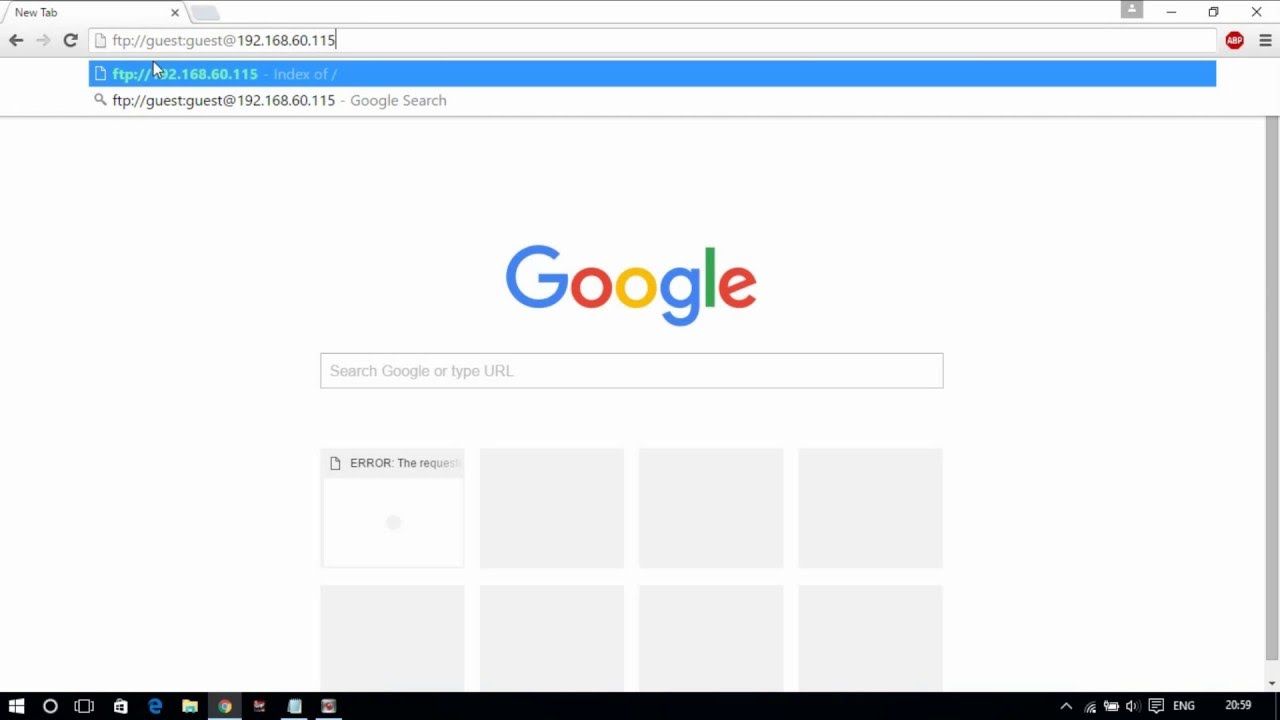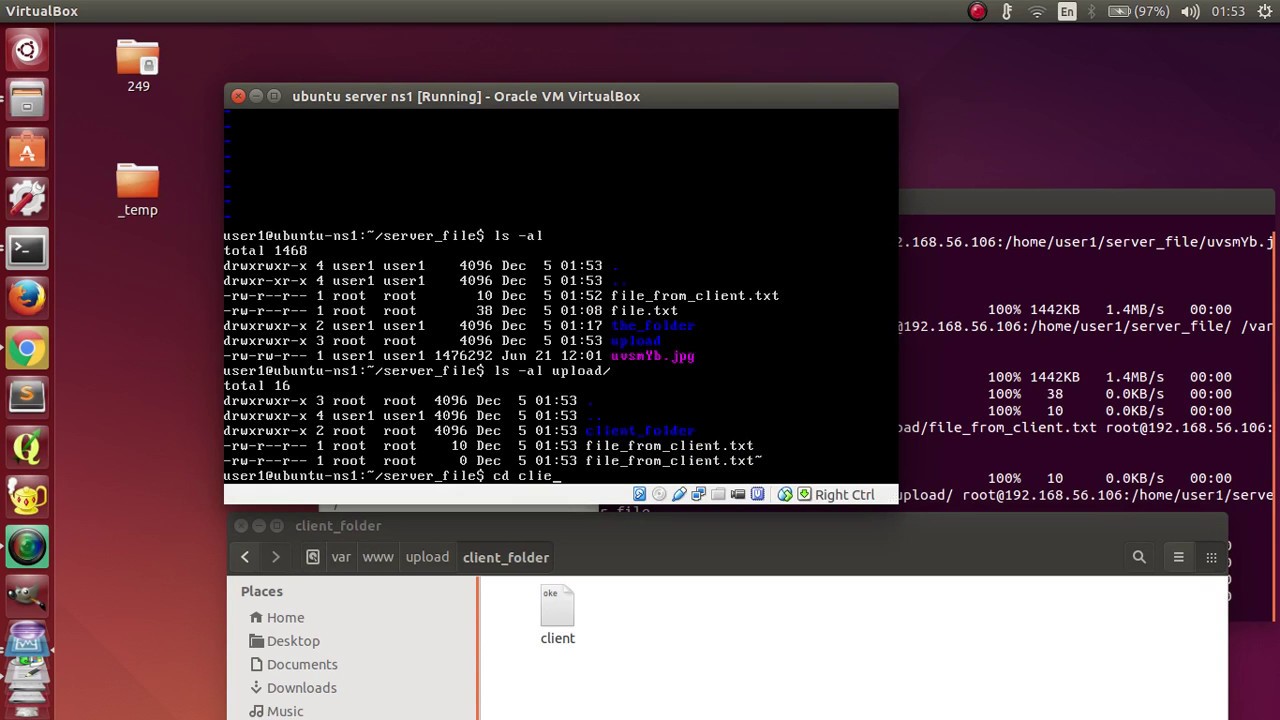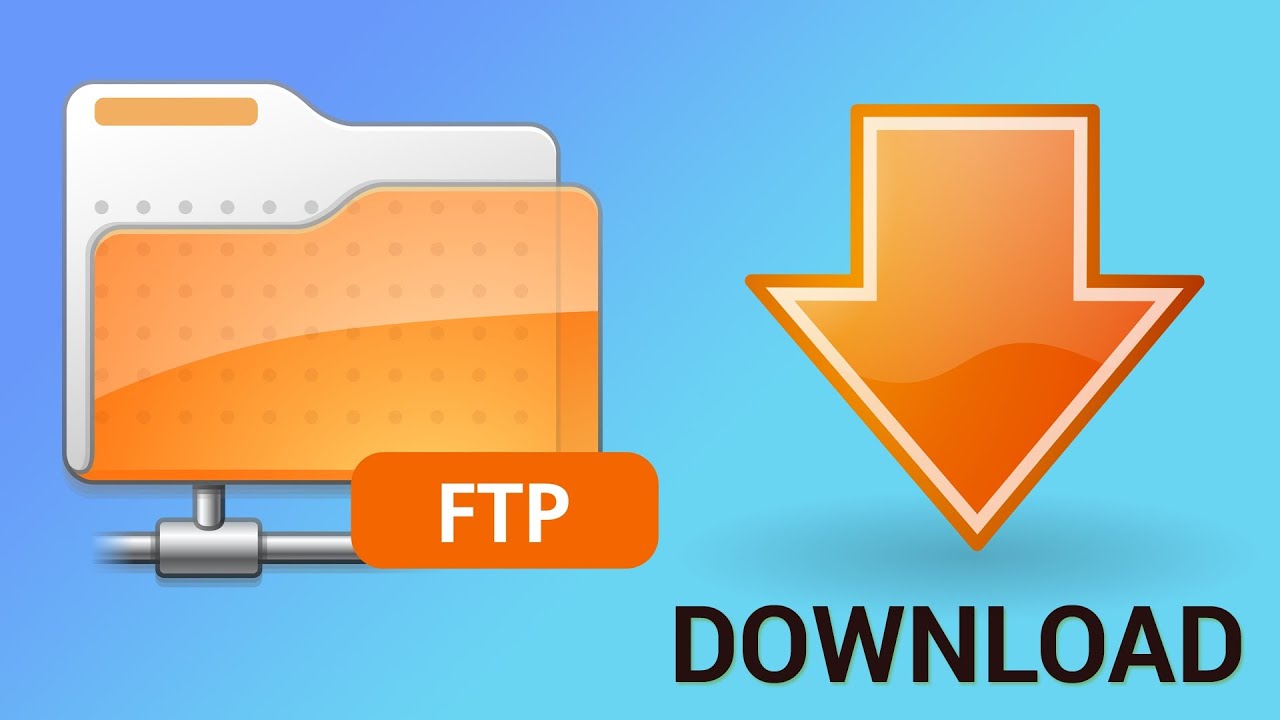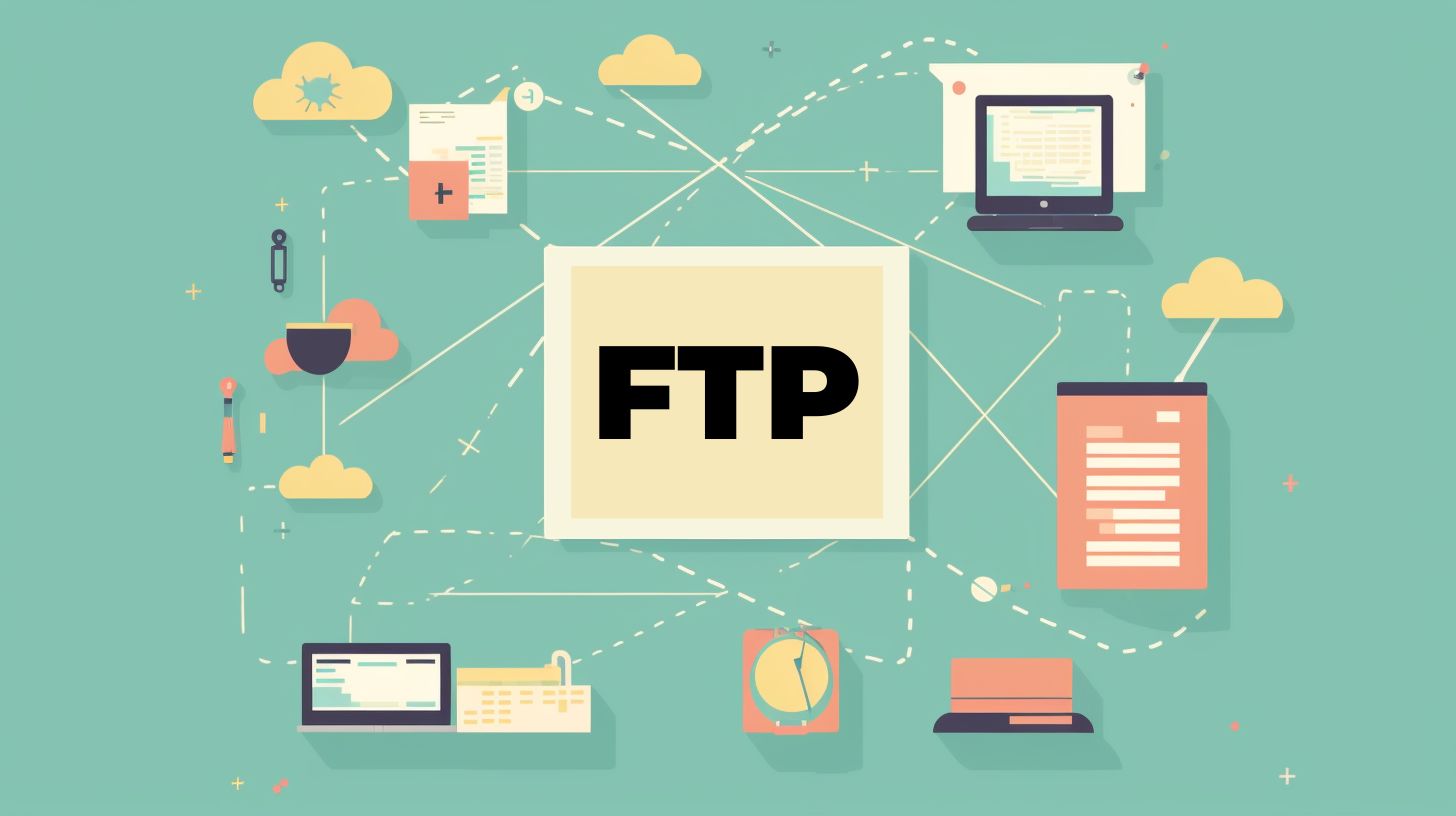Introduction
When it comes to browsing the web, Google Chrome stands out as one of the most popular and versatile web browsers. Its user-friendly interface and extensive range of extensions make it a go-to choice for many internet users. However, despite its numerous features, Chrome does not have native support for opening FTP (File Transfer Protocol) links. This can be a hindrance when you need to access files stored on an FTP server directly from your browser.
Thankfully, there is a solution. By installing a specialized FTP client extension, you can seamlessly integrate FTP functionality into your Chrome browser. This allows you to open and manage FTP links with ease, streamlining your workflow and enhancing your browsing experience.
In this article, we will guide you through the process of opening FTP links in Chrome using an FTP client extension. You will learn how to install the extension, open FTP links, and access and manage files on the FTP server directly from your browser. Whether you are a seasoned Chrome user or just getting started, this step-by-step guide will equip you with the knowledge and tools to navigate FTP links effortlessly within the Chrome browser. Let's dive in and explore the world of FTP accessibility in Chrome!
Step 1: Install an FTP client extension
To enable FTP functionality in Chrome, you'll need to install a dedicated FTP client extension. This extension serves as a bridge between your browser and FTP servers, allowing you to seamlessly interact with FTP links and access files stored on remote servers. Follow these steps to install an FTP client extension and unlock the power of FTP within your Chrome browser:
-
Open the Chrome Web Store: Launch your Chrome browser and navigate to the Chrome Web Store. This is the official repository for Chrome extensions, offering a wide range of tools and add-ons to enhance your browsing experience.
-
Search for FTP client extensions: In the search bar at the top left corner of the Chrome Web Store, type "FTP client" or "FTP extension" and press Enter. This will display a list of available FTP client extensions designed to integrate FTP functionality into Chrome.
-
Explore extension options: Take some time to explore the various FTP client extensions listed in the search results. Pay attention to user ratings, reviews, and the number of downloads to gauge the popularity and reliability of each extension.
-
Select and install the extension: Once you've identified a suitable FTP client extension, click on it to view more details. Review the extension's description, features, and any additional information provided by the developer. If the extension meets your requirements, click the "Add to Chrome" button to initiate the installation process.
-
Confirm the installation: A pop-up window will appear, prompting you to confirm the installation of the FTP client extension. Click "Add extension" to proceed. Chrome will then download and install the extension, integrating it into your browser.
-
Access the extension: After the installation is complete, you can typically find the FTP client extension's icon in the Chrome toolbar or extensions menu. Click on the extension's icon to open its interface and configure any settings or preferences as needed.
By following these steps, you can successfully install an FTP client extension in Chrome, equipping your browser with the capability to handle FTP links and interact with remote servers. With the extension in place, you're ready to move on to the next step and learn how to open FTP links within Chrome.
Step 2: Open the FTP link in Chrome
Now that you have installed an FTP client extension in Chrome, you are ready to open FTP links directly within the browser. This streamlined process eliminates the need for a standalone FTP client, allowing you to seamlessly access and manage files on remote servers without leaving the familiar environment of your web browser.
To open an FTP link in Chrome using the installed extension, follow these steps:
-
Identify the FTP link: When you encounter an FTP link, whether it's embedded in a web page or provided to you directly, it will typically begin with "ftp://" followed by the address of the FTP server. For example, an FTP link may look like "ftp://ftp.example.com" or "ftp://username:password@ftp.example.com" if authentication credentials are required.
-
Click on the FTP link: Simply click on the FTP link within a web page or any other location where it is displayed. Alternatively, you can copy the FTP link and paste it into the address bar of your Chrome browser. Upon clicking or entering the FTP link, the FTP client extension you installed will intercept the request and handle the connection to the remote server.
-
Authenticate if required: If the FTP server requires authentication, the extension will prompt you to enter the necessary credentials, such as a username and password. This ensures secure access to the server and allows you to proceed with connecting to the FTP resource.
-
Access the FTP server: Once authenticated, the FTP client extension will establish a connection to the specified FTP server. You will then be able to view the contents of the remote server directly within your Chrome browser, presenting a familiar interface for navigating directories and managing files.
By following these steps, you can effortlessly open FTP links in Chrome using the installed FTP client extension. This seamless integration empowers you to access and interact with FTP resources without the need for external applications, enhancing your browsing experience and productivity.
With the ability to open FTP links in Chrome, you are now equipped to explore and manage files on remote servers directly from your browser. This newfound convenience opens up a world of possibilities for accessing and organizing FTP resources, all within the familiar and feature-rich environment of Google Chrome.
Step 3: Access and manage files on the FTP server
With an FTP client extension seamlessly integrated into your Chrome browser, you gain the ability to not only open FTP links but also access and manage files on the remote FTP server directly from your browser. This streamlined process eliminates the need for standalone FTP client software, providing a convenient and efficient way to interact with FTP resources. Let's delve into the details of accessing and managing files on the FTP server using the installed FTP client extension.
Navigating the FTP server
Upon successfully connecting to the FTP server through the extension, you will be presented with a familiar file navigation interface within your Chrome browser. This interface typically resembles a file explorer, allowing you to browse through directories and access files stored on the remote server. The intuitive layout and functionality enable seamless navigation, empowering you to locate and interact with the desired files effortlessly.
Uploading and downloading files
The FTP client extension equips you with the capability to upload files from your local system to the FTP server and download files from the server to your computer. This bidirectional file transfer functionality streamlines the process of managing files, enabling you to effortlessly move data between your local storage and the remote FTP server. Whether you need to upload documents, images, or any other file type, the extension simplifies the transfer process, enhancing your productivity.
File management and organization
Managing files on the FTP server becomes a straightforward task with the integrated capabilities of the FTP client extension. You can create new directories, rename files, delete unwanted items, and perform various file management operations directly from your Chrome browser. This level of control and flexibility empowers you to organize the contents of the FTP server according to your specific requirements, fostering a more efficient and structured approach to file management.
Editing files remotely
In addition to basic file management, some FTP client extensions offer the ability to edit text-based files directly from the browser interface. This feature allows you to open and modify files such as HTML, CSS, and JavaScript files without the need to download them to your local system. By editing files directly on the FTP server, you can streamline the development and maintenance of web-related resources, saving time and simplifying the editing process.
Enhanced productivity and convenience
The seamless integration of FTP functionality into Chrome through the installed extension enhances your productivity and convenience when working with FTP resources. By providing a feature-rich interface for accessing, managing, and editing files on remote servers, the extension elevates your browsing experience and empowers you to efficiently handle FTP-related tasks without leaving the familiar environment of your web browser.
By leveraging the capabilities of the installed FTP client extension, you can seamlessly access and manage files on FTP servers, streamlining your workflow and enhancing your browsing experience within the Chrome browser. With the ability to interact with FTP resources directly from your browser, you are well-equipped to navigate and manage files on remote servers with ease and efficiency.
Conclusion
In conclusion, the integration of an FTP client extension into the Chrome browser opens up a world of possibilities for users seeking to access and manage files on remote FTP servers. By following the step-by-step process outlined in this guide, you have successfully equipped your Chrome browser with the capability to seamlessly handle FTP links and interact with FTP resources without the need for standalone FTP client software.
The installation of an FTP client extension empowers you to bridge the gap between your browser and FTP servers, providing a user-friendly interface for navigating directories, uploading and downloading files, and performing essential file management tasks. This streamlined approach eliminates the complexities often associated with traditional FTP client applications, offering a convenient and efficient way to work with FTP resources directly within the familiar environment of Google Chrome.
With the ability to open FTP links in Chrome and access remote servers with ease, you are well-positioned to enhance your productivity and streamline your workflow. Whether you are a web developer collaborating on projects, a content creator managing digital assets, or a business professional accessing shared files, the integrated FTP functionality in Chrome offers a seamless and feature-rich solution for interacting with FTP resources.
Furthermore, the convenience of editing files remotely directly from the browser interface adds a layer of efficiency to your file management tasks, allowing you to make quick updates to web-related resources without the need to download and re-upload files. This capability streamlines the development and maintenance of web content, saving time and simplifying the editing process.
By embracing the capabilities of the installed FTP client extension, you have unlocked the potential to navigate and manage files on FTP servers with ease and efficiency. This newfound convenience not only enhances your browsing experience but also empowers you to seamlessly integrate FTP functionality into your everyday workflow, ultimately boosting your productivity and simplifying your interactions with remote FTP resources.
In essence, the seamless integration of FTP functionality into Chrome through the installed extension represents a significant enhancement to the browsing experience, offering a user-friendly and feature-rich solution for handling FTP links and managing files on remote servers. With the knowledge and tools gained from this guide, you are well-equipped to harness the power of FTP accessibility within the Chrome browser, opening up a world of opportunities for efficient file management and seamless interaction with FTP resources.

























